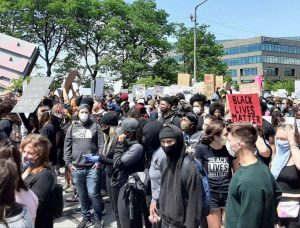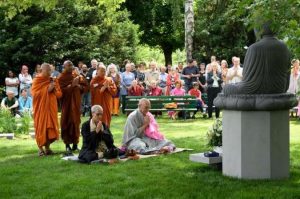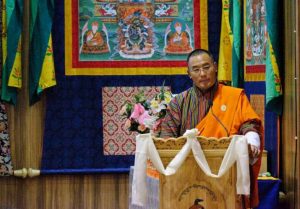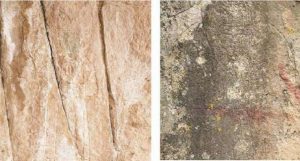
Buddhist leaders and sangha members gathered in central Seoul on Tuesday, among representatives of South Korea’s seven major religious orders, to memorialize the people who lost their lives in the tragic Halloween crowd crush in the city’s Itaewon entertainment district on 29 October.
The delegates came from the Korean Conference of Religions for Peace, a consultative body representing the main religious communities in Korea: Protestantism, Catholicism, Seon Buddhism, Won Buddhism, Confucianism, Cheondo-gyo, and the Association for Korean Native Religions. They stood before an interfaith memorial altar that has been erected in the public plaza in front of Seoul City Hall, offering prayers and paying tribute.
“There should never be such a disaster again, and we pray for the victims’ rebirth in paradise,” Ven. Jinwoo, president of the Jogye Order of Korean Buddhism, South Korea’s largest Buddhist order, wrote in a guestbook for tributes. (The Korea Times)
“I’m very sorry that an unthinkable disaster has occurred, and I think the people and everyone’s hearts are broken,” he later told media representatives. “The whole country should make efforts to prevent such an unfortunate accident from happening again.” (The Korea Times)



At least 156 people—most of them women and most in their 20s—were killed, and more than 150 injured when a surge of revelers forced its way down a narrow alley during Halloween celebrations in the popular nightlife neighborhood. Of the 151 people who were injured in the incident, 29 remain in critical condition at the time of writing.
Although investigations into the exact cause of the incident—Korea’s worst crowd disaster on record—have yet to be concluded, many are asking whether more proactive and responsive police crowd control measures could have mitigated or averted the tragedy.
Korean President Yoon Suk-yeol has announced a national period of mourning until Saturday, and has ordered the government to cover the victims’ funeral and medical costs.
“It hurts my heart that young people fell victim to this incident,” said Na Sang-ho, the head of Korea’s Won Buddhist community. “I pray for the repose of their souls and hope they will come back to us with a comfortable mind.” (The Korea Times)

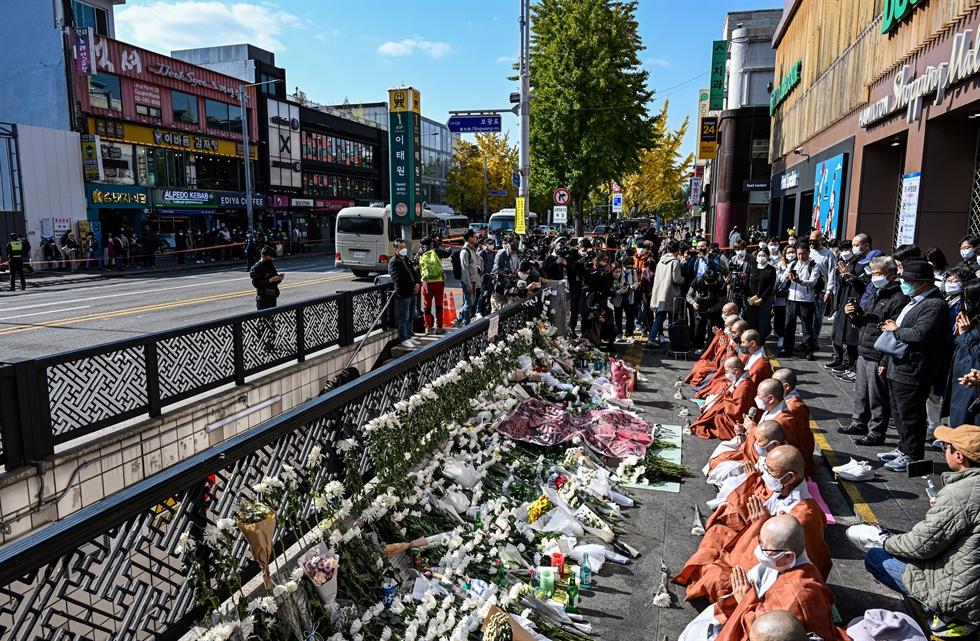
Witnesses to the tragedy have described people falling on one another as the crowd pressed tighter, with those caught in the crush within a narrow, sloped alley lined with bars and restaurants suffering severe breathing difficulties and falling unconscious. The entire Itaewon area was so packed with vehicles and revelers at the time that emergency services personnel were unable to reach the center of the disaster. Video footage broadcast by news networks showed people frantically attempting to provide CPR to victims lying motionless in the street.
“Since I know the geography of the complicated alleys, I ran out to help people in the crowd. Some who came with me survived,” an Itaewon business owner was quoted as saying by The Korea Times newspaper on condition of anonymity. “As someone who witnessed the situation, I am traumatized. I still have a vivid image of 200–300 people crying, and screaming for help before me. I kept bringing them out, but couldn’t help them all.” (The Korea Times)
“My heart is aching very much. We are among the world’s 10 largest economies, and I totally don’t understand how this can happen in our nation,” said Kim, 73, a retired environmental engineering researcher. “Our public insensitivity to safety is too severe. We should always be careful about everything, but we don’t do so, and I think that’s the biggest problem.” (The Diplomat)
Closer to the scene of the tragedy, male and female monastics gathered to chant and strike bells alongside members of the public, who assembled near an exit of the Itaewon subway station to share their grief before a makeshift memorial. Mourners left traditional white chrysanthemums, as well as offerings of food and drinks.
The Association of Korean Buddhist Orders shared a statement of condolence for the victims and for the families of those who lost their lives.
“The Buddhist communities grieve this tragedy that caused massive casualties. The government should closely investigate the causes and come up with safety measures to prevent such tragedy from reoccurring again,” the association stated. (The Korea Herald)

According to data from the 2015 national census, the majority of South Korea’s population—56.1 per cent—holds no religious affiliation. Christians make up the largest religious segment of the population at 27.6 per cent, while Buddhists account for 15.5 per cent.
See more
Religious organizations grieve and offer condolences after Halloween tragedy (The Korea Herald)
Religious leaders mourn Halloween crush victims (The Korea Times)
Korea’s melting pot community of Itaewon wary of fallout from deadly crowd crush (The Korea Times)
Religious leaders mourn Halloween crush victims (Korea JoongAng Daily)
South Koreans Ashamed Over Safety Failures in Halloween Tragedy (The Diplomat)
Grief, prayers and anger at South Korea crowd crush memorial (France 24)
Seoul’s Halloween victims primarily women, young people (AP News)
Related news reports from BDG
Engaged Buddhism: 20th Biennial INEB Conference Concludes in South Korea with a Commitment to Action, Peace, and Change
Engaged Buddhism: 20th Biennial INEB Conference Commences in South Korea
New Head of Jogye Order of Korean Buddhism Takes Office
Related features from BDG
The Best Farewell For the Deceased
On Homecomings and Release from Suffering – None of This Is Easy







